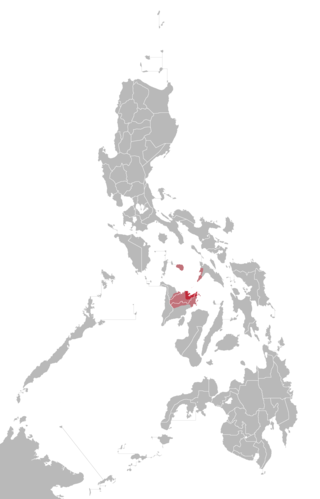Capiznon language
| Capiznon | |
|---|---|
| Capiceño | |
| Binisaya, Binisaya nga Capiznon, Bisaya | |
| Native to | Philippines |
| Region | most parts of coastal Capiz, and some portions of Iloilo, Masbate, and Aklan |
Native speakers | 640,000 (2000)[1] |
| Language codes | |
| ISO 639-3 | cps |
| Glottolog | capi1239 |
 Area where Capiznon is spoken | |
Capiznon (Spanish: capiceño[2][3][4]) is an Austronesian regional language spoken in Western Visayas in the Philippines. Capiznon is concentrated in the province of Capiz in the northeast of Panay Island. It is a member of the Visayan language family and the people are part of the wider Visayan ethnolinguistic group, who constitute the largest Filipino ethnolinguistic group. The language is often confused with Hiligaynon due to dialectological comprehension similarities and as high as 91% mutual intelligibility,[5] but it has its certain unique accent and vocabulary that integrates Aklanon and Waray lexicon.[6] Despite its distinct corruption of Hiligaynon lateral approximants, a prevalent feature among rural farmers, ethnic convergence and cosmopolitanism has led to a shift back to the purely Hiligaynon prosodic form of slower tonality and softer and longer vowels most particularly among the younger generations.
Capiznon Speaking Municipalities
Capiz
- Roxas City
- Ivisan
- Panay
- Panitan
- Pilar
- Mambusao
- Pontevedra
- President Roxas
- Sapi-an
- Sigma
- Jamindan
- Tapaz
Iloilo
Aklan
Masbate
Common Lexical Differences between Capiznon and Hiligaynon Language
| Capiznon | Hiligaynon | English |
|---|---|---|
| yanda | subong | today/now |
| ini/mini/muni | ini/amo ini/amo ni | this |
| ina/mina/muna | ina/amo ina | that |
| patawa | kadlaw | laugh |
| palataw-an | kaladlawan | funny |
| malukong | yahong | bowl |
| ti-aw/dinaskal | lango-lango | joke |
| palanggana | labador | washbasin |
| pawa | sanag | bright/luminous |
| wakal/hambal | hambal | talk |
| lagbong/hulog | hulog | fall |
| puya | bata | child |
| pilaw | tuyo | sleepy |
| tamarindo | sambag | tamarind tree |
| tangis | hibi | cry |
| laong | pahanugot/lisensya | consent |
| samad | guba | to break/broken |
| siki | tiil | foot |
| mayad | maayo | fine/good |
| gutos | lakat/baktas | to travel by foot |
| gumangkon | hinablos | nephew/niece |
| libod | lagaw | to stroll around |
See Also
External links
References
- ^ Capiznon at Ethnologue (18th ed., 2015) (subscription required)
- ^ http://www.gov.ph/news/printerfriendly.asp?i=22071[permanent dead link]
- ^ "Archived copy". Archived from the original on 2009-04-14. Retrieved 2009-03-07.
{{cite web}}: Unknown parameter|deadurl=ignored (|url-status=suggested) (help)CS1 maint: archived copy as title (link) - ^ "Archived copy". Archived from the original on 2009-04-24. Retrieved 2009-03-07.
{{cite web}}: Unknown parameter|deadurl=ignored (|url-status=suggested) (help)CS1 maint: archived copy as title (link) - ^ http://www.ethnologue.com/show_language.asp?code=cps
- ^ http://www.capiz.gov.ph/index.php?option=com_content&view=article&id=87:the-capiznon-language&catid=43:capiz-profile&Itemid=73
